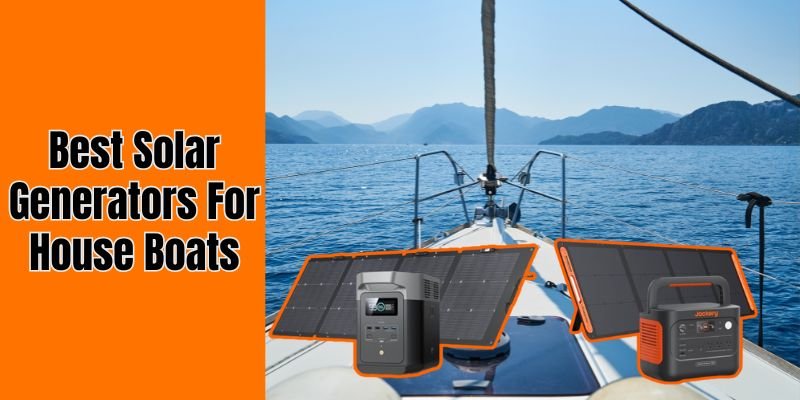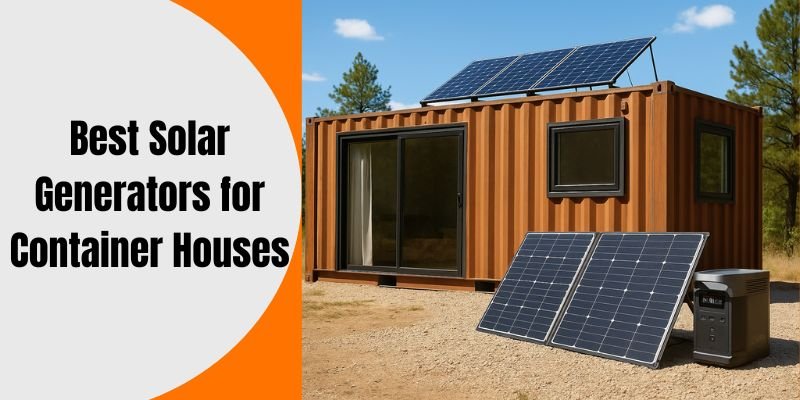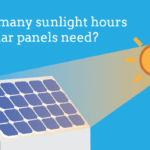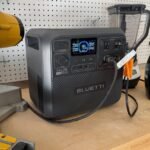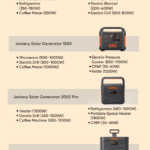Disclosure: This post contains affiliate links and I will be compensated if you make a purchase after clicking through my links. Learn More
Solar panels need sunlight to generate electricity. Shade can reduce their efficiency.
But do solar panels still work in shaded areas? Solar panels are a popular choice for clean energy. They harness sunlight to power homes and businesses. But what happens when clouds roll in or trees cast shadows? People often wonder if shade makes solar panels useless.
The truth is, solar panels can still produce electricity in the shade, but at a reduced rate. Shade affects their ability to absorb sunlight, which is vital for energy production. Different types of panels and installation techniques can help minimize shade’s impact. Understanding how shade influences solar panels is important before investing in this technology. Let’s explore how shade affects solar panels and what you can do about it.
Introduction To Solar Energy
Solar energy has gained immense popularity in recent years. It offers a sustainable solution to our growing energy needs. Harnessing sunlight, solar panels generate electricity for homes and businesses. This renewable energy source reduces reliance on fossil fuels. Understanding its benefits and limitations is crucial for anyone considering solar power.
Importance Of Solar Power
Solar power provides a cleaner, greener alternative to traditional energy sources. It helps reduce carbon emissions, contributing to a healthier planet. By using solar panels, people can lower their energy bills. They also gain energy independence. This makes solar power an attractive option for many households. Solar energy is abundant and renewable. It can be harnessed anywhere the sun shines. This makes it a reliable resource for future generations.
Basic Functionality Of Solar Panels
Solar panels convert sunlight into electricity. They contain photovoltaic cells that capture sunlight. These cells generate an electric current. This process powers homes and appliances. Solar panels can work in various conditions. Even in shade, they produce electricity, though less efficiently. Their effectiveness depends on the amount of sunlight received. Proper placement is key to maximizing their output. Solar panels are durable and require minimal maintenance. This makes them a cost-effective solution for long-term energy needs.

Credit: www.ankersolix.com
Understanding Shade Impact
Solar panels can still function in shaded areas, though their efficiency decreases. Partial shading impacts electricity production, leading to reduced output. To optimize performance, strategic placement and advanced technology can help mitigate shading effects.
Understanding how shade affects solar panels is crucial for anyone considering solar energy. Shade can significantly impact the efficiency of solar panels, sometimes surprising even seasoned solar users. It’s important to know exactly how different types of shade can influence your panels’ performance and what you can do to mitigate these effects.
Types Of Shade
Shade can originate from various sources. Common culprits include trees, buildings, and even cloud cover. Each type of shade affects solar panels differently.
Static shade comes from permanent structures like buildings. This type of shade is predictable and can be planned around when installing panels.
Dynamic shade, such as that from moving clouds or swaying tree branches, is more challenging. Its unpredictable nature makes it harder to manage without advanced technology like microinverters or power optimizers.
Effect On Solar Panel Efficiency
Shade doesn’t just reduce the amount of sunlight hitting the panels; it can disproportionately affect their efficiency. Even a small shadow can cause a significant drop in energy production.
For example, if just one panel in a series is shaded, it can drag down the performance of the entire string of panels. This is because traditional solar setups connect panels in series, meaning one weak link can lower the output of all.
You might wonder how to combat these inefficiencies. Consider using microinverters, which allow each panel to operate independently. This setup ensures that a shaded panel doesn’t affect the rest of your array.
Have you ever considered trimming trees or repositioning installations to maximize sunlight exposure? Such actions can greatly improve your panels’ efficiency.
Understanding shade’s impact on solar panels can help you make informed decisions and optimize your solar setup for maximum efficiency.
Technological Advances
Solar technology continues to evolve rapidly. New advancements are making solar panels more efficient in various conditions. This includes shaded environments. With these innovations, solar panels can capture more sunlight and produce energy even when partially shaded. Let’s explore how these technologies work to improve solar panel performance.
Bypass Diodes
Bypass diodes play a crucial role in solar panels. They help maintain energy production in shaded conditions. These diodes allow electricity to bypass shaded cells. This prevents losses and keeps energy flowing. Without bypass diodes, shaded cells could reduce panel efficiency significantly.
Microinverters And Optimizers
Microinverters convert solar power directly at each panel. They enhance energy efficiency even if some panels are shaded. Each panel can operate independently. This means shade on one panel won’t impact the others. Optimizers also help in managing shaded conditions. They adjust power output for each panel, ensuring maximum energy production. These technologies make solar systems adaptable and efficient.
Partial Vs. Full Shade
Solar panels can still generate power in partial shade but with reduced efficiency. Full shade significantly impacts their performance, limiting energy production. Proper panel placement and shading analysis are crucial to optimize solar energy output.
Solar panels are a fantastic way to harness the power of the sun, but what happens when shade enters the picture? Understanding the difference between partial and full shade is crucial for maximizing your solar power potential. Let’s dive into how each scenario impacts the efficiency of solar panels.
Partial Shade Scenarios
Partial shade occurs when objects like trees or buildings block sunlight intermittently during the day. It’s like when you walk under a tree and feel the sun peeking through the leaves.
In these situations, your solar panels might still generate some power, but at reduced efficiency. The amount of power lost depends on the type of solar panels you have. Some panels handle shade better than others.
Consider investing in micro-inverters or power optimizers. These can help mitigate the effects of partial shade by allowing each panel to operate independently. This means if one panel is shaded, it won’t drag down the performance of the others.
Full Shade Challenges
Full shade is a different beast altogether. Imagine sitting under a large umbrella; no sunlight reaches you at all. Similarly, solar panels under full shade struggle to produce power.
If your panels are shaded for most of the day, you might need to rethink their placement. Look for spots that get the most sunlight, or consider trimming back those overhanging branches.
Think about whether moving objects like cars or seasonal changes affect shade patterns. This can help you decide the best location for your panels.
Have you ever wondered how much power you’re losing due to shade? Monitoring systems can provide real-time data, helping you make informed decisions.
Solar panels can still work in shaded areas, but their efficiency varies. Understanding partial vs. full shade helps you make smarter choices for your solar setup. Have you ever noticed shade impacting your solar panels? Share your experience or questions in the comments below!
Environmental Factors
Solar panels can still generate electricity in shaded areas, but their efficiency decreases. Shadows from trees or buildings reduce sunlight exposure, limiting the panels’ power output. To optimize performance, strategic placement to minimize shading is essential.
Solar panels are a fantastic investment for clean energy, but their effectiveness can be influenced by various environmental factors. One common concern is how well they work when partially or fully shaded. Understanding these factors helps you make informed decisions about solar energy use in your home or business. The environment around your solar panels plays a crucial role in their efficiency. Let’s dive into the details to see how different elements can impact their performance.
Seasonal Variations
The changing seasons can significantly impact your solar panel performance. During winter, shorter days and lower sun angles mean less sunlight hits the panels. Cloud cover can also be more frequent, further reducing sunlight.
In contrast, summer offers longer days and more direct sunlight. However, extreme heat can sometimes decrease the efficiency of solar panels. To maximize efficiency, consider the seasonal changes in your region and plan accordingly.
Geographical Considerations
Your location plays a vital role in the effectiveness of solar panels. If you live in a place with frequent cloud cover, like Seattle, you might worry about solar energy production. Yet, many people in cloudy areas successfully use solar panels with some adjustments.
Think about the latitude of your home. Solar panels in higher latitudes receive less sunlight, especially in winter. But advancements in technology help address these challenges. Are you in a mountainous area? Consider how the terrain might cast shadows on your panels.
These geographical factors are crucial when deciding on solar energy. By understanding them, you can choose the best setup for your needs.
Installation Strategies
When it comes to solar panel installation, you might wonder how they perform in shady areas. While it’s true that solar panels thrive in direct sunlight, there are strategic ways to maximize their efficiency even in less-than-perfect conditions. Let’s dive into some effective installation strategies that can help you make the most of your solar investment.
Optimal Panel Placement
Choosing the right spot for your solar panels is crucial. Look for areas that receive the most sunlight throughout the day. Avoid placing panels under trees, near buildings, or in areas with frequent shade from other structures. If you have limited options, consider trimming trees or relocating obstructions. Even small adjustments can significantly boost your solar output.
Think about your roof’s orientation. South-facing roofs often capture the most sunlight, but east or west placements can also be effective. Analyze the sun’s path in your area. A simple observation during different times of the day can be enlightening. Is there a spot that stays sunlit longer than others? That’s where your panels should go.
Utilizing Solar Tracking Systems
Solar tracking systems can be a game-changer. These devices adjust the angle of your solar panels to follow the sun’s movement. Imagine panels that tilt and rotate to capture every ray possible. This approach can increase energy collection by up to 40%, even in shaded areas.
Consider the initial investment versus long-term gains. While trackers might cost more upfront, the enhanced efficiency can lead to quicker returns on investment. Does your location have variable weather conditions? Trackers adapt to changes, ensuring optimal performance regardless of cloud cover or shifting shadows.
Are you ready to explore these strategies for your solar panel installation? By focusing on placement and smart technology, you can maximize energy production, even when shade is unavoidable.
Alternative Solutions
Solar panels can still function in shaded areas, but efficiency drops. Trees, buildings, or clouds might affect energy production. Consider using shade-tolerant solar technologies or strategic panel placement for better results.
When considering solar panel efficiency, one common concern is their performance in shaded areas. While shade can reduce the effectiveness of solar panels, there are alternative solutions to ensure you still get the most out of your solar investment. Let’s delve into some practical options that can optimize your energy usage even when the sun doesn’t directly hit your panels.
Hybrid Solar Systems
Hybrid solar systems combine the benefits of both grid-tied and off-grid systems. They allow you to store excess energy in batteries and use it when needed, such as during cloudy days or at night. This flexibility ensures you aren’t solely dependent on direct sunlight for energy.
Imagine having the ability to switch between solar power and the grid seamlessly. This not only maximizes your energy savings but also provides a reliable backup during power outages. A hybrid system can be particularly beneficial if your home is frequently shaded by trees or other structures.
Energy Storage Options
Energy storage is another effective solution for dealing with shade. By storing the energy your panels generate, you can use it later when your system isn’t producing power. Batteries like lithium-ion are popular choices due to their efficiency and long lifespan.
Think about the peace of mind knowing you have stored energy ready to use whenever needed. This can be especially useful during peak energy hours when electricity costs are higher. With energy storage, you can take full advantage of your solar system’s capabilities, regardless of shading issues.
Do you find yourself worrying about unpredictable weather affecting your solar energy production? With energy storage, you can alleviate that concern and ensure a steady energy supply for your home.
By exploring these alternative solutions, you can enhance your solar panel’s efficiency and maintain a sustainable energy source, even in less-than-perfect conditions.

Credit: www.igs.com
Cost Implications
Understanding the cost implications of solar panels in shaded areas is crucial. It affects both initial expenses and long-term financial benefits. Homeowners often ponder whether investing in solar panels under shade is worthwhile. Let’s explore the cost factors involved in such scenarios.
Installation Costs
Installing solar panels can be pricey. Shade might increase these costs. More equipment may be needed to maximize sunlight capture. This includes microinverters or power optimizers. These devices help manage the inconsistent sunlight. Additional installation efforts might also be required. Skilled labor might be necessary to position panels optimally.
Long-term Savings
Savings over time depend on several factors. Panels in shade produce less energy. This might affect the return on investment. Yet, even shaded panels can reduce electricity bills. Savings accumulate, offsetting installation costs. Consider energy needs and local electricity rates. They influence the overall financial benefit.
Future Of Shaded Solar Panels
The future of shaded solar panels holds exciting possibilities. As technology advances, more solutions arise to harness solar energy efficiently. Even in less-than-ideal conditions, like shaded environments, improvements continue.
Innovative Research
Scientists explore new ways to improve shaded solar panels. They test materials with better light absorption capabilities. Engineers design panels that adjust to varying sunlight levels. This research aims to enhance energy output even in shaded areas.
Advanced algorithms help optimize panel positioning. These algorithms predict sunlight patterns accurately. Smart systems adjust panels for maximum exposure. Such innovations promise better performance from shaded panels.
Potential Market Trends
The market for shaded solar panels grows steadily. Businesses seek eco-friendly energy solutions for urban areas. Rooftops and city landscapes often have partial shading. Panels designed for these conditions attract interest.
Consumers demand sustainable energy options. Shaded solar panels offer opportunities for energy savings. As awareness increases, demand for effective shaded panels rises. Companies invest in technology to meet these needs.
Government policies support renewable energy adoption. Incentives encourage the use of solar panels, shaded or not. This support boosts market growth and innovation.

Credit: powmr.com
Frequently Asked Questions
How Effective Are Solar Panels In The Shade?
Solar panels are less effective in shade. Shaded panels produce less electricity due to reduced sunlight exposure. Using bypass diodes or micro-inverters can help optimize energy output. Ideal placement ensures maximum sun exposure for efficiency. Consider partial shading impacts while planning installation for best results.
How Do Solar Panels Work When There’s No Sun?
Solar panels store energy in batteries for use during cloudy days or nighttime. They also connect to the grid, ensuring continuous power. This way, solar panels can still provide electricity without direct sunlight. Efficient energy management maximizes the stored power usage.
Do Solar Panels Need Direct Sunlight Or Just Light?
Solar panels work best with direct sunlight but can still generate power with indirect light. They convert any available light into electricity. However, direct sunlight maximizes efficiency and energy production. Ensure panels are positioned to capture maximum sun exposure for optimal performance.
What Type Of Solar Panel Works Best In Shade?
Monocrystalline solar panels perform best in shaded areas. Their efficiency remains high due to advanced technology. These panels generate electricity effectively, even with partial shading. Choose monocrystalline panels for optimal energy output in areas with frequent shade. Their durability and efficiency make them ideal for challenging environments.
Read Here: Do Solar Panels Work on Snowy Days
Final Words
Solar panels work in shade, but less efficiently. Shaded panels produce less energy. You can still get some power, though. It’s important to know your environment. Trees, buildings, and weather can affect solar output. Consider panel placement carefully. Use shade-tolerant technology if needed.
Maximizing exposure boosts efficiency. Regular maintenance ensures panels function well. A balanced approach helps harness solar power effectively. Investing in good systems pays off over time. Think about potential shade sources before installation. Smart planning leads to better energy results.
Solar panels are a sustainable choice. Even with some shade, they contribute to energy needs.

